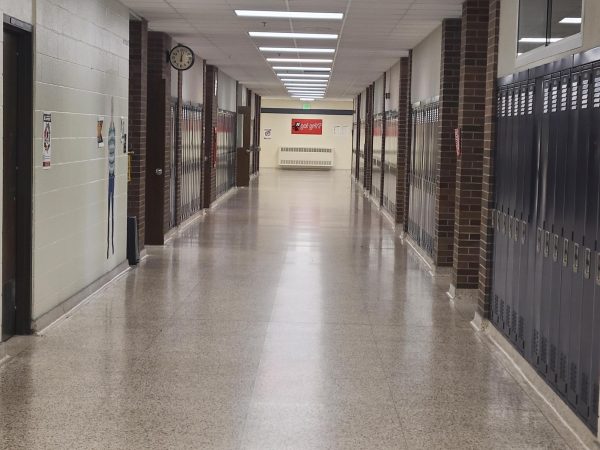Personal Views About FAST Friday
Students with all A’s, B’s, or C’s use these passes to leave school early on FAST Fridays.
Foster Academic Success Today is a program started by the high school three years ago in November 2020. However, the program ended for the year shortly after when rising COVID-19 cases caused the school to transition to a hybrid schedule.
“This year, it is significantly less fast and kids don’t necessarily see it as the incentive that it was last year,” Kranz said. “This is almost not feasible for a lot of kids who maybe have practice right after school or have to work. They don’t see it as an incentive because it’s just enough time to leave and go get food or go get clothes or whatever as opposed to the two-hour mark which was a little bit longer. It gave you more time to do some stuff.”
On FAST Fridays, students with grades of C- or higher are allowed to leave early, specifically at 2:13 p.m. However, if a student has a grade of a D or lower, they have to stay for a 3o-minute period referred to as intervention time. There are two interventions. If there are at least two classes that a student is failing, they have to stay for both. There are many ways to get an intervention.
“Doing nothing while we’re together for the other four days a week in class,” senior English teacher Jessica Kranz said. “Then, come Friday, they want to salvage their grade, but they forget that the intervention chart is run on Wednesday morning. So, they’re stuck. I consider my class a good time to get their work done, and if they don’t do it, that’s why they’re in interventions.”
Some students to get good grades to impress their parents or to have a bright, foreseeable future. For Rieger, that’s not the case.
“What motivates me more to get my grades done is not having pretty A’s to show my mom,” Rieger said. “It’s getting home early on Fridays,”
Some students use FAST. Friday as motivation so that they can do fun things and leave early.
“Well, sometimes I walk early with my friends, and we get something to eat,” freshman Sydney Vo said. “If it wasn’t for FAST Friday, I’d probably be in a really bad slump and not do any of my work.”
Interventions could look different depending on the subject or teacher. A lot of times, it’s missing work that needs to be made up. That’s not always the case, though.
“That’s where it’s tricky,” Kranz said. “I am always stuck here: Do I reward somebody for having done nothing, and all of a sudden, they want me to save their grade? Or, do I give them ‘busy work’ to try to salvage? I don’t know. In speech class, if somebody refuses to give a speech, they automatically fail that speech, so there’s nothing that they can do to fix that.”
Multiple times, teachers have noted that intervention periods have been smaller in numbers.
“Six per session, typically, are listed to come, but they don’t show up because they are either sick that day or moms and dads called them out that day, and they don’t show,” Kranz said.
However, this isn’t all of the teachers’ experiences.
“My numbers have been significantly down this year,” freshman English teacher Chris Pearcy said. “My students’ performance has improved compared to last year. At least for freshmen, I think there has been an overall positive effect. It has allowed me to focus more on helping that handful of students who are still coming on FAST Friday.”
Your donation will support the student journalists of Logansport High School. Your contribution will allow us to purchase equipment and cover our annual website hosting costs.

Senior Jennifer Anaya-Serrano has been a part of the Magpie staff since 2021, starting off as a photographer and bettering her way to become Photo Editor....











